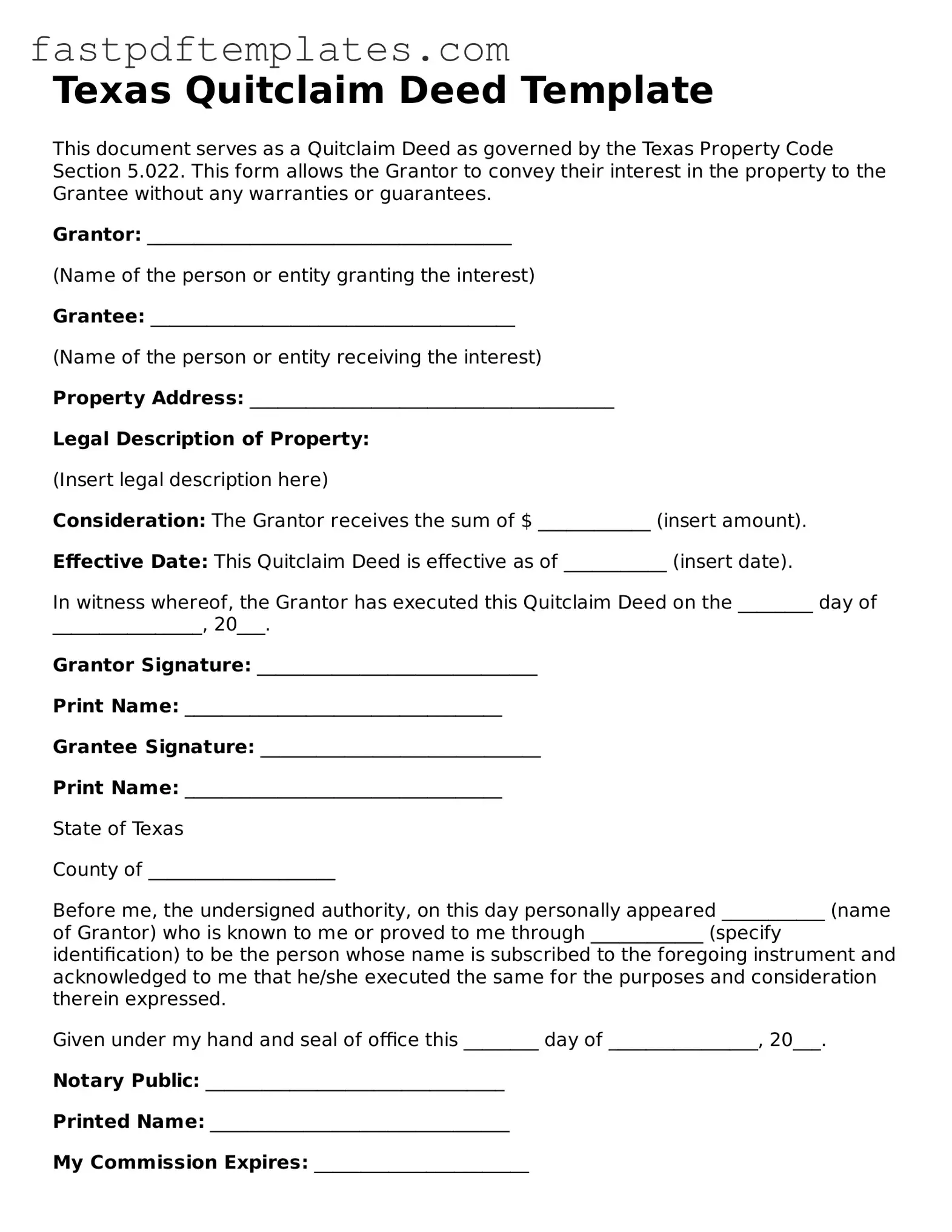Texas Quitclaim Deed Template
This document serves as a Quitclaim Deed as governed by the Texas Property Code Section 5.022. This form allows the Grantor to convey their interest in the property to the Grantee without any warranties or guarantees.
Grantor: _______________________________________
(Name of the person or entity granting the interest)
Grantee: _______________________________________
(Name of the person or entity receiving the interest)
Property Address: _______________________________________
Legal Description of Property:
(Insert legal description here)
Consideration: The Grantor receives the sum of $ ____________ (insert amount).
Effective Date: This Quitclaim Deed is effective as of ___________ (insert date).
In witness whereof, the Grantor has executed this Quitclaim Deed on the ________ day of ________________, 20___.
Grantor Signature: ______________________________
Print Name: __________________________________
Grantee Signature: ______________________________
Print Name: __________________________________
State of Texas
County of ____________________
Before me, the undersigned authority, on this day personally appeared ___________ (name of Grantor) who is known to me or proved to me through ____________ (specify identification) to be the person whose name is subscribed to the foregoing instrument and acknowledged to me that he/she executed the same for the purposes and consideration therein expressed.
Given under my hand and seal of office this ________ day of ________________, 20___.
Notary Public: ________________________________
Printed Name: ________________________________
My Commission Expires: _______________________
